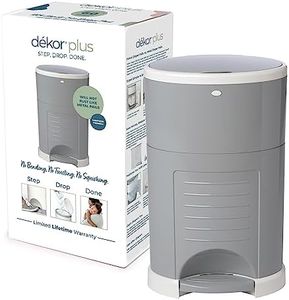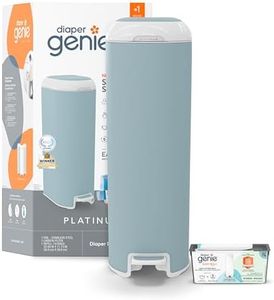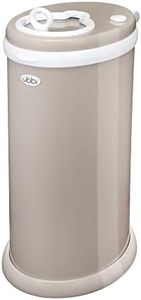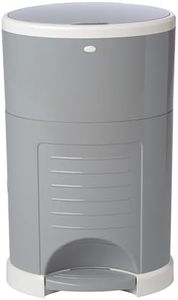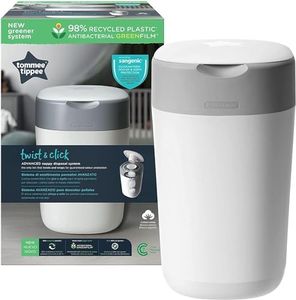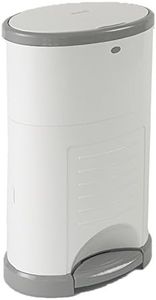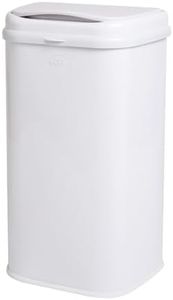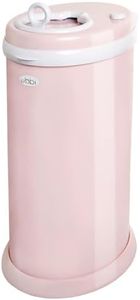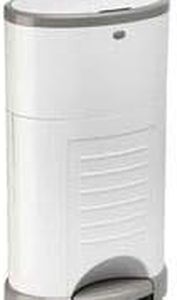We Use CookiesWe use cookies to enhance the security, performance,
functionality and for analytical and promotional activities. By continuing to browse this site you
are agreeing to our privacy policy
10 Best Diaper Pails
From leading brands and best sellers available on the web.By clicking on a link to a third party's website, log data is shared with that third party.
Buying Guide for the Best Diaper Pails
When looking for the right diaper pail, it's all about balancing convenience, odor control, and capacity. A diaper pail's main job is to keep unpleasant smells contained and to make the diaper-changing process as easy as possible. Because every family is a little different, it's helpful to think about where and how often you'll use the pail, as well as what will work best for your changing routine and living space.Odor ControlOdor control is about how well the diaper pail traps and locks away smells. This is one of the most critical features because it directly affects the comfort of your home. Odor control can be achieved through special sealing mechanisms, liners, or filters. Basic models might have just a simple lid, which works for mild use, but with more frequent diaper changes or in smaller living spaces, you'll want a more advanced system like double sealing lids or carbon filters to stop smells from escaping. If you’re sensitive to odors or have a nursery close to living areas, prioritize superior odor control.
CapacityCapacity refers to how many diapers the pail can hold before it needs to be emptied. A small capacity means the pail will need more frequent emptying, which can be fine if you don't change diapers often or if you have limited space. A larger capacity is helpful for multiple children or less frequent emptying, but can mean the pail gets heavy or unwieldy. Consider your daily diaper usage: if you change many diapers daily, or prefer fewer trips to the trash, look for a higher capacity. For light use or smaller spaces, a compact pail should suffice.
Compatibility with Liners/BagsThis spec describes what kind of bags or liners the diaper pail uses. Some require special, brand-specific liners that are designed for maximum odor control, while others work with regular garbage bags for convenience and flexibility. If you prefer the simplicity and cost saving of using standard bags, check that the pail supports them. However, special liners may seal in smells better but could add recurring costs. Think about whether you'd rather have flexibility or extra odor protection when picking this feature.
Ease of UseEase of use includes features like how you open the pail (foot pedals, push-buttons, or lids), how easy it is to change the bag, and whether you can manage it one-handed while holding a baby. Complex latching mechanisms or awkward bag removal can be frustrating, especially during frequent changes. If you often have your hands full, look for features like hands-free operation or smooth, quick bag changes. Simpler designs often mean quicker, less messy operation.
Size and DesignSize and design relate to how much space the pail takes up and how it fits with your nursery or room décor. Larger pails will need more floor space, while compact pails fit better in tight areas. Design also affects portability—some have handles or are lightweight. You may also want a pail that blends in with your room or is easy to keep clean. Think about where you'll put the pail and how much space you have before choosing the right size and style.




